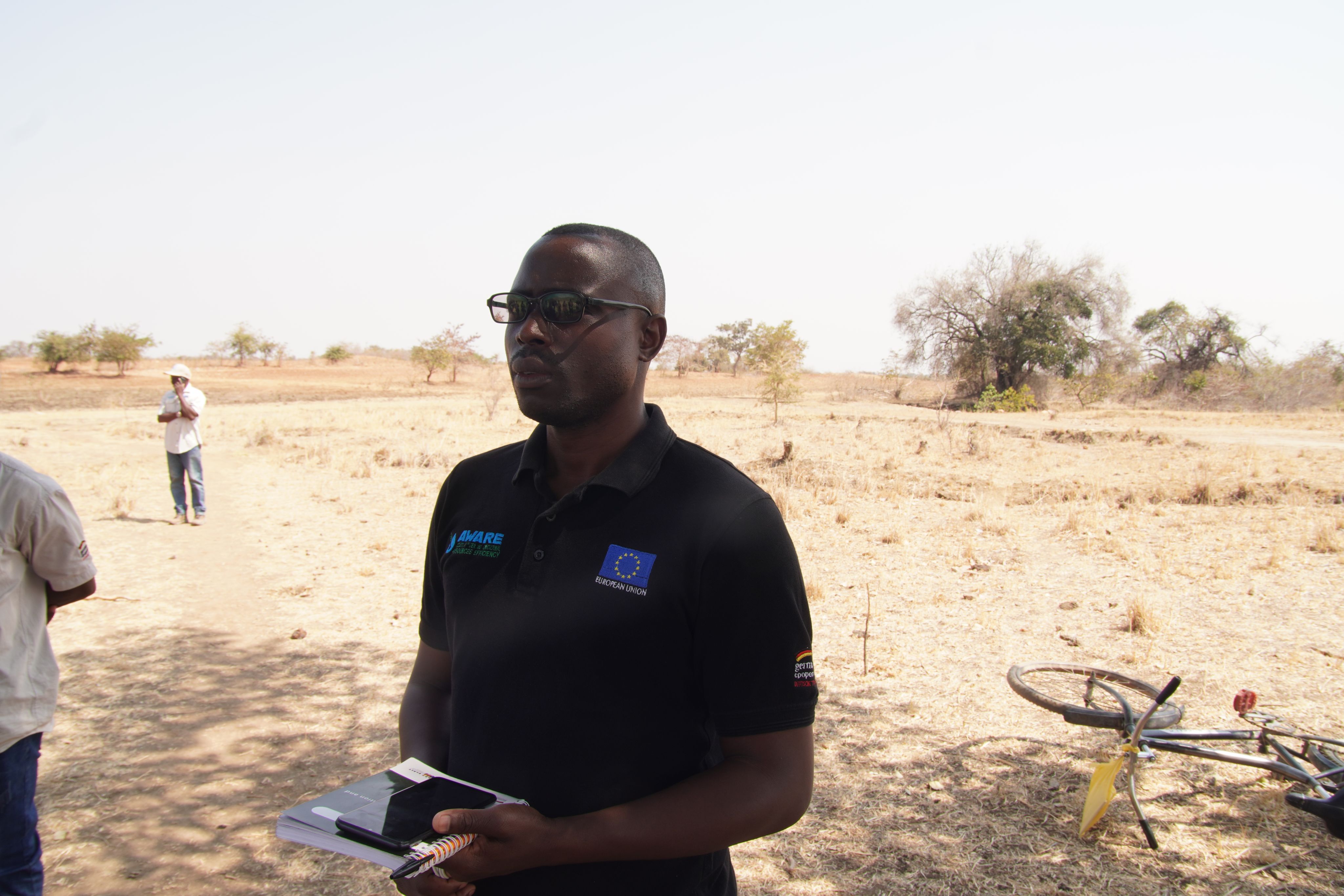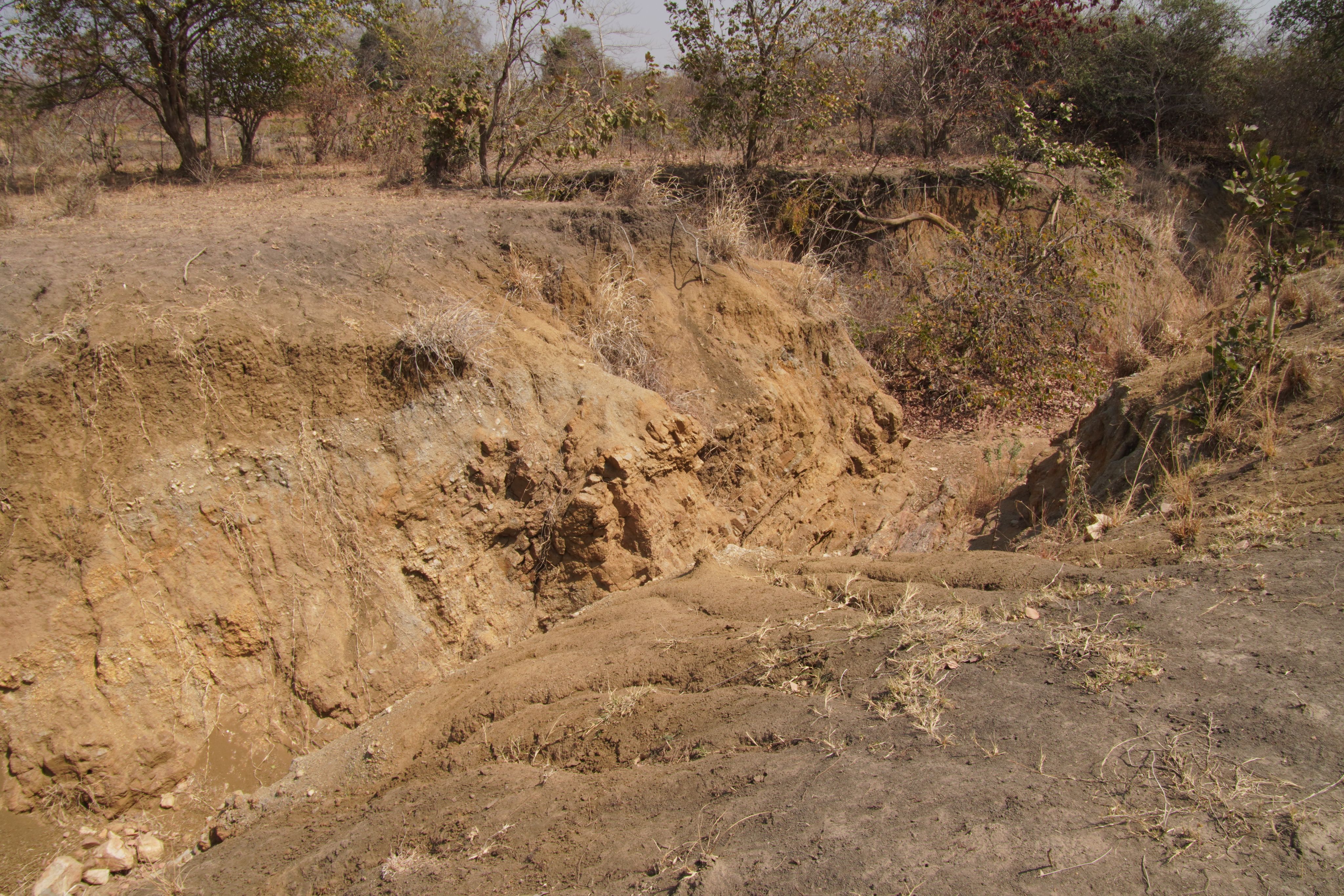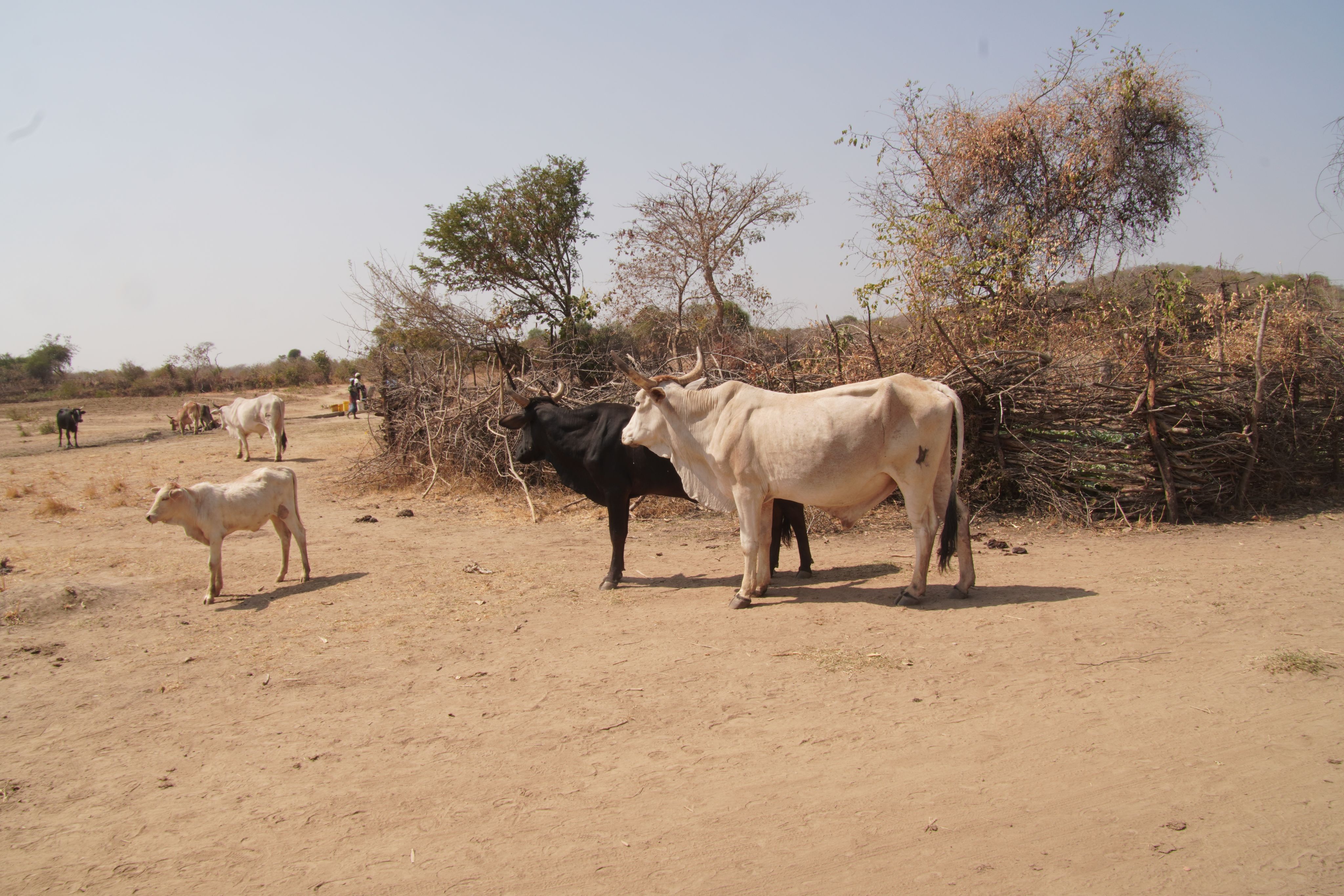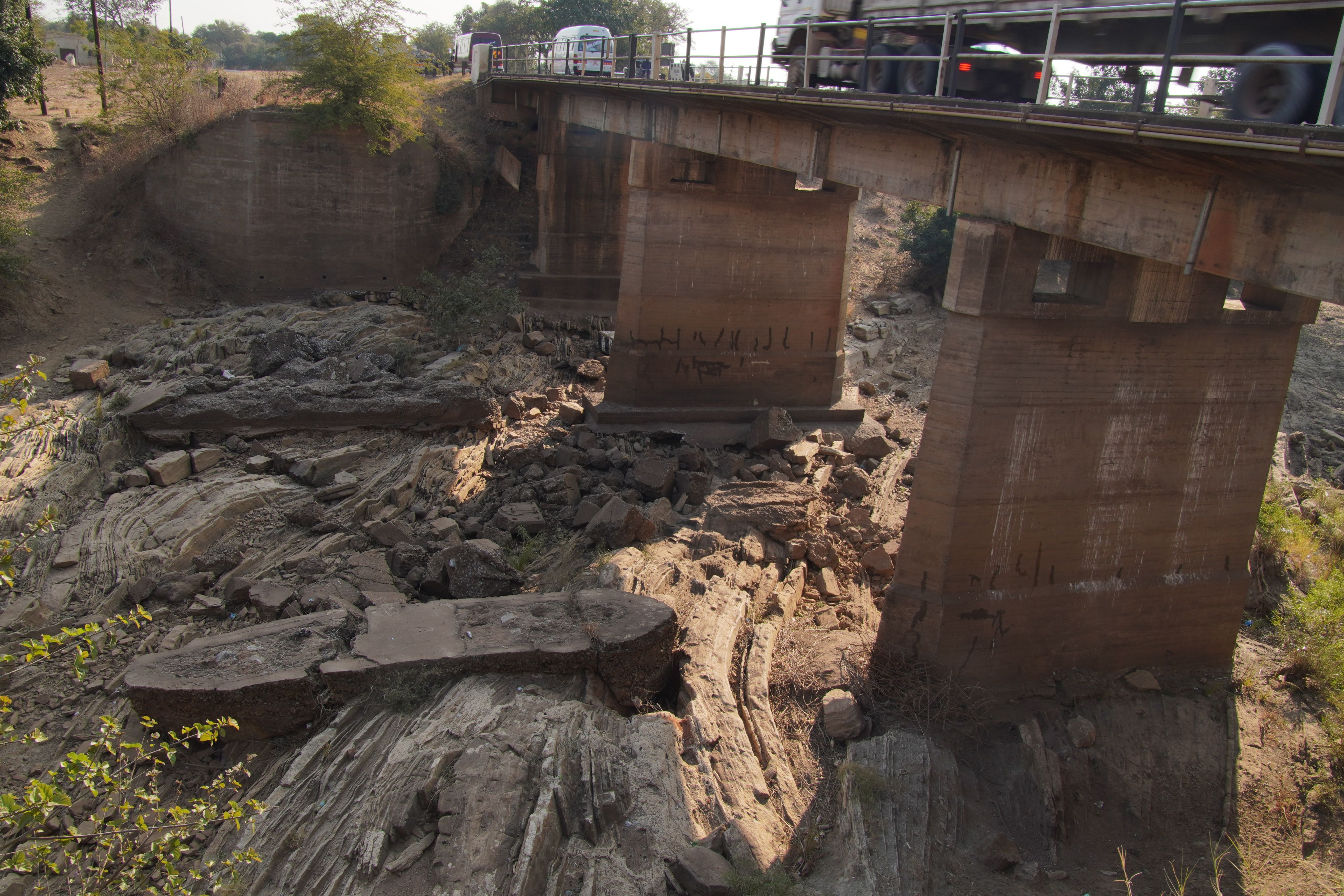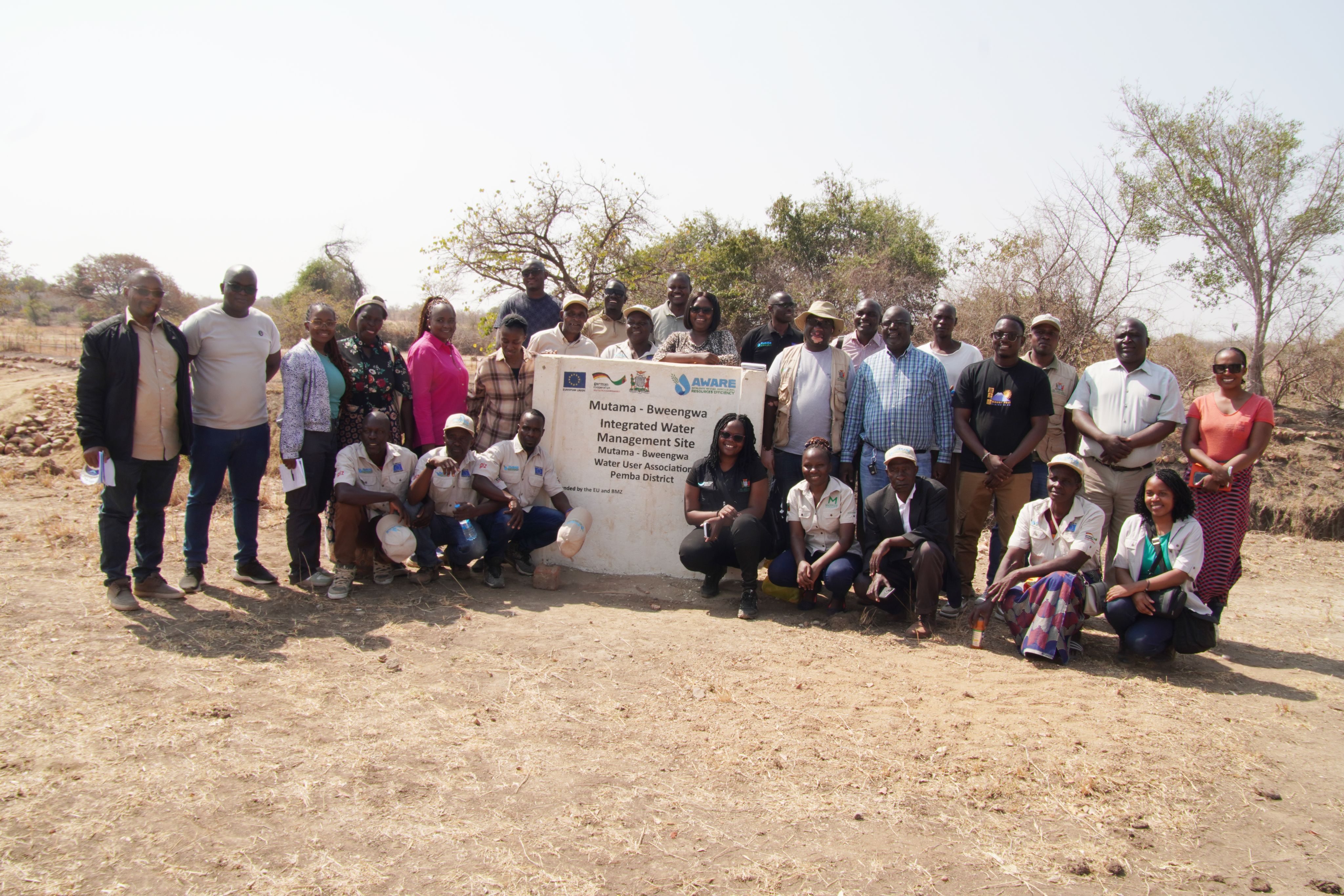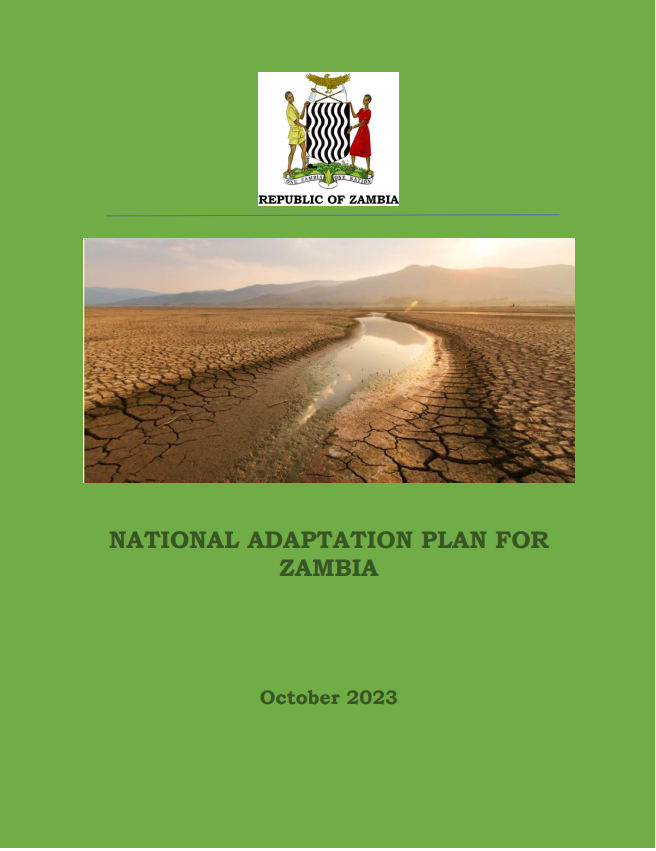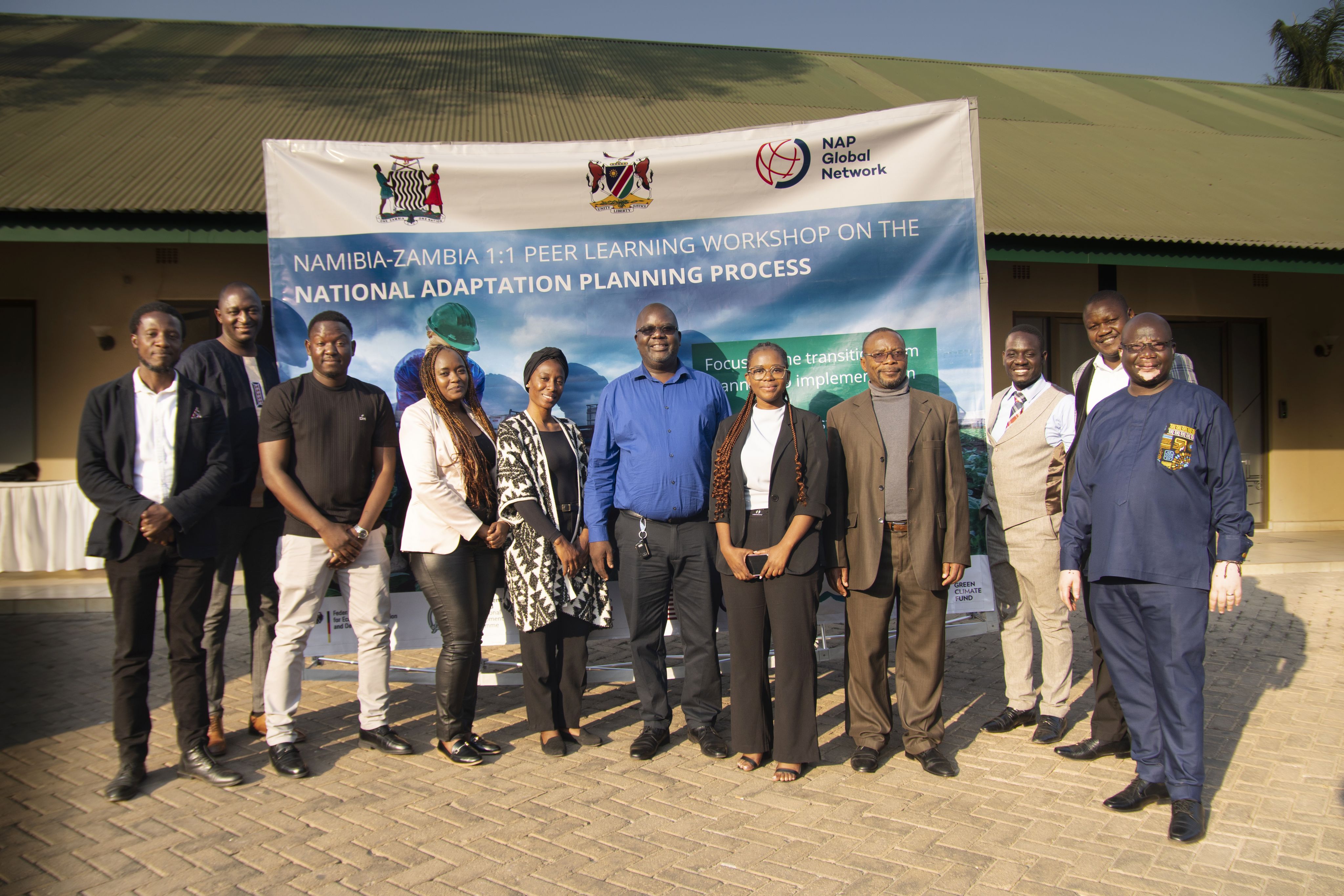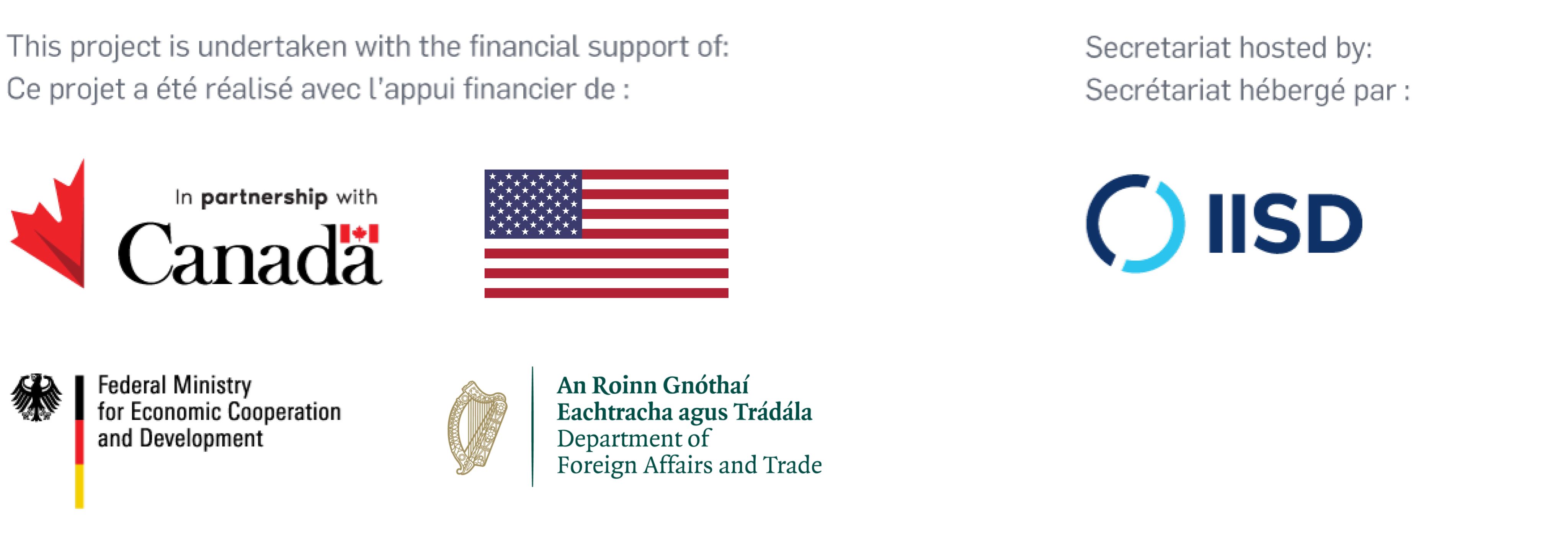In the Trenches in the Fight Against Drought
How Zambia is scaling up community efforts through the national adaptation plan process
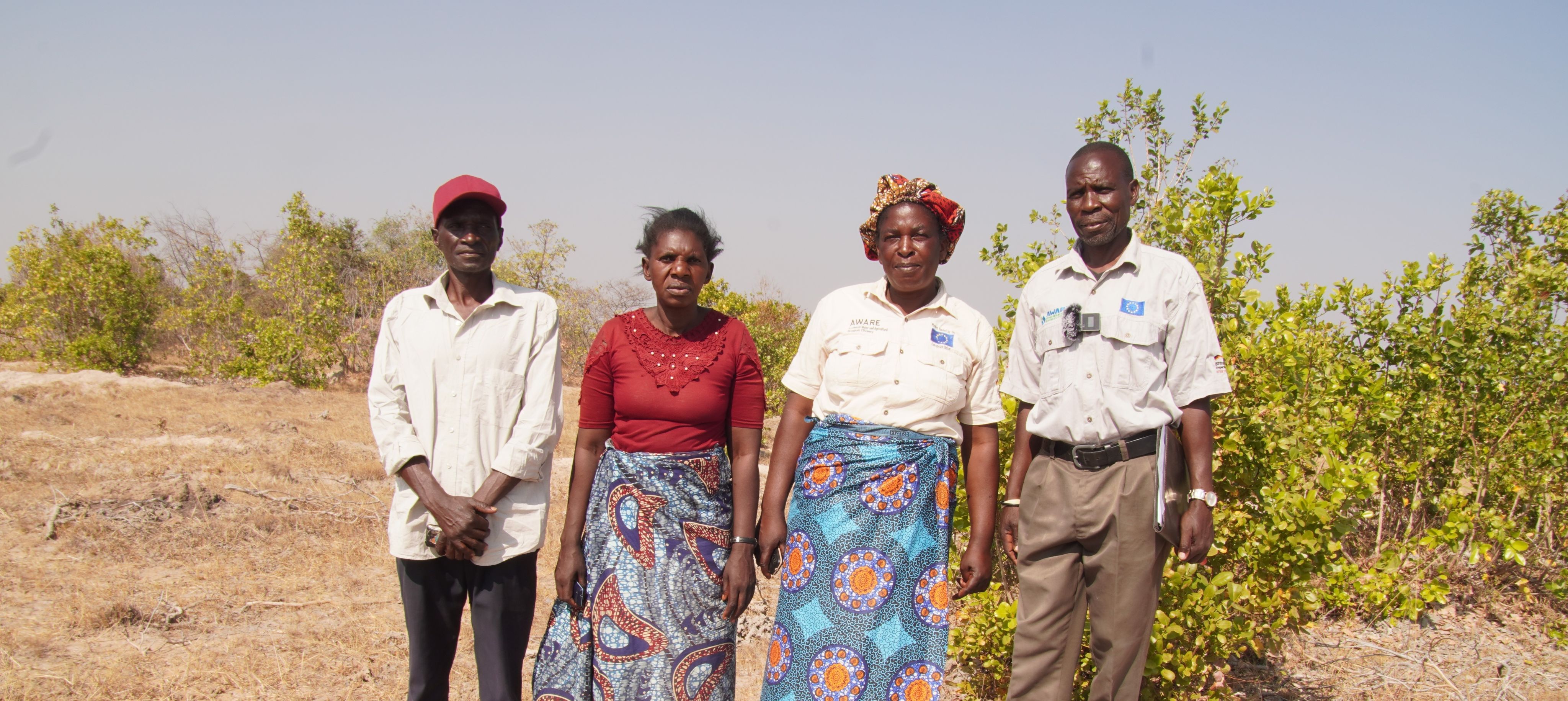
Since January 2024, Zambia has been battling an unprecedented drought—its worst in two decades—that poses significant challenges to its resilience.
Triggered by El Niño, the drought has contributed to severe food and water shortages across Zambian communities, affecting nearly half of the country’s population. In response to this crisis, President Hakainde Hichilema declared a national disaster and emergency in February, mobilizing enhanced drought response measures across key sectors, provinces, and districts.
Zambia launched its first national adaptation plan (NAP) in late 2023. It sets out a roadmap for the country to prepare for and cope with climate change hazards, which in Zambia have manifested as frequent and intense droughts. Through the NAP process, the country has been working to scale up and strengthen climate change adaptation planning and implementation.
In August 2024, Lusaka hosted a bilateral peer learning workshop, bringing together national decision-makers from Zambia and Namibia’s NAP teams. The workshop featured site visits to selected adaptation projects in Zambia, which provided valuable insights into NAP implementation experiences and lessons learned. NAP processes can support local efforts by helping to improve coordination, secure finance, build skills and knowledge, and track progress as part of national monitoring, evaluation, and learning systems.
Two Zambian communities, Magoye and Mutema Bweenga, are taking forward climate adaptation projects that present exemplary models of climate resilience as part of the adaptation priorities set out in the country’s NAP. The two communities are both in Pemba District—a predominantly agricultural district in Southern Province where crop and livestock production are central to many households’ livelihoods. However, the current devastating drought has severely impacted the district.
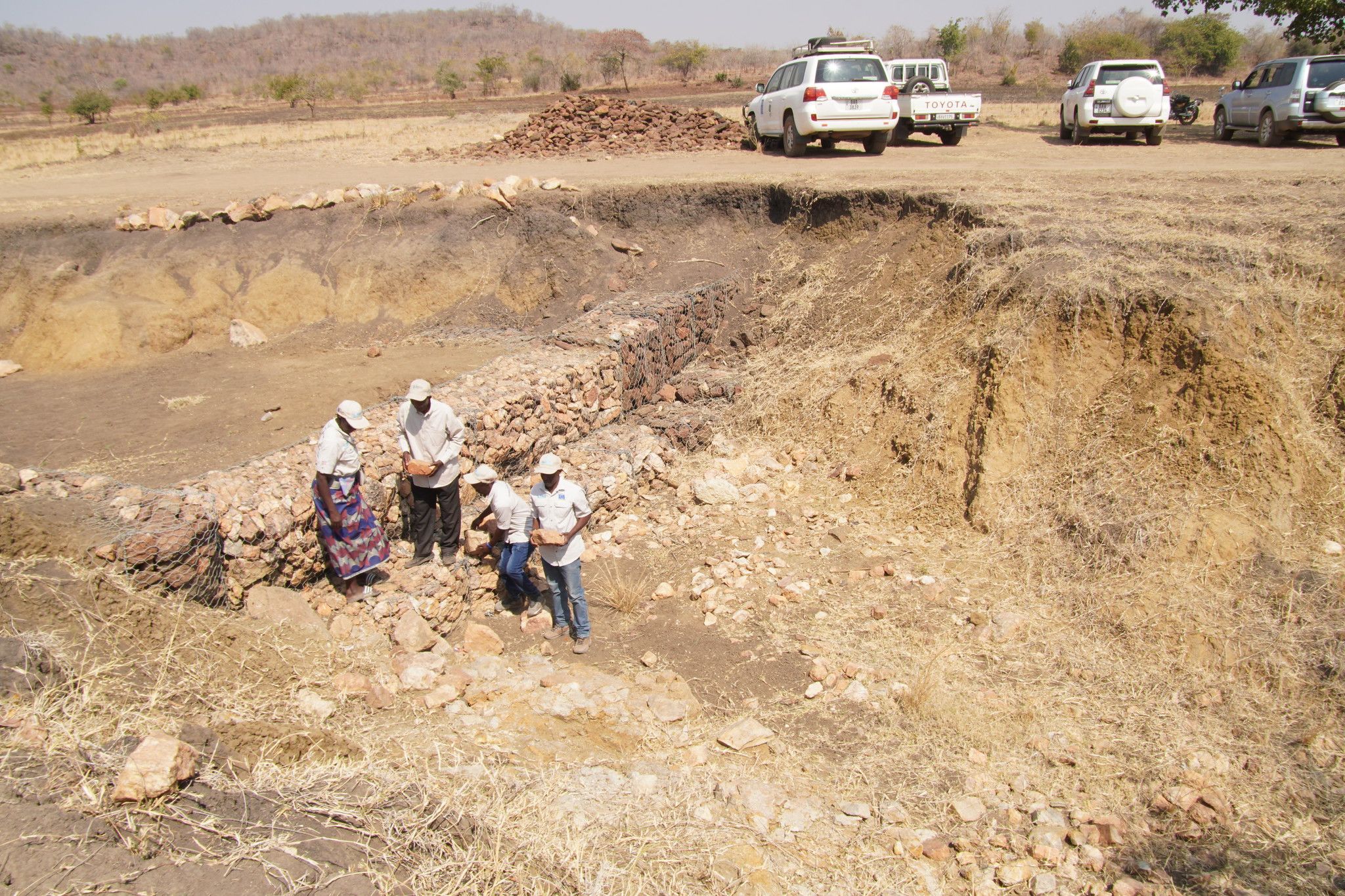
Fighting drought in Magoye and Mutema Bweenga, Pemba District, Zambia
The Accelerate Water and Agricultural Resources Efficiency (AWARE) program* aims to support adaptation action to enhance climate-smart water resource management and efficient agricultural water use for smallholder farmers in the Lower Kafue Sub-Catchment—including communities in the Pemba district—using gender-responsive approaches and emphasizing nature-based solutions (NbS). Since 2019, AWARE has supported more than 11,000 smallholders in the sub-catchment to improve their agricultural water management practices.
Through NAP-aligned initiatives, Magoye and Mutema Bweenga are implementing climate change adaptation measures that address pressing local needs.
In Magoye and Mutema Bweengwa catchments, communities are implementing ecosystem-based adaptation—a type of NbS—to revitalize water recharge systems and build climate resilience. By strategically digging shallow trenches, known as “recharge trenches,” measuring 5 metres long and 1 metre deep, the trenches harness and conserve water resources and enhance groundwater recharge to improve pasture production from a high-level water table.
These trenches trap underground water and surface rainwater, minimize soil erosion and water loss, and promote groundwater recharge, supporting sustainable agriculture and pasture growth. This community initiative boosts food security and livelihoods by providing improved fodder for livestock while also promoting biodiversity and ecosystem services. As a successful model for NbS, it demonstrates the potential for community-driven, eco-friendly solutions to address water scarcity and climate change, aligning with the national adaptation priorities articulated in Zambia’s NAP and offering a scalable solution for building climate-resilient communities.
* The AWARE Project is funded by the European Union (EU) and the German Federal Ministry of Economic Cooperation and Development (BMZ) and implemented in partnership with the Zambian Ministry of Water Development, Sanitation and Environmental Protection (MWDSEP) and Ministry of Agriculture (MoA).
Wesford Mudenda, water resources governance advisor for GIZ, describes adaptation measures being taken in Mutama Bweengwa.
Wesford Mudenda, water resources governance advisor for GIZ, describes adaptation measures being taken in Mutama Bweengwa.
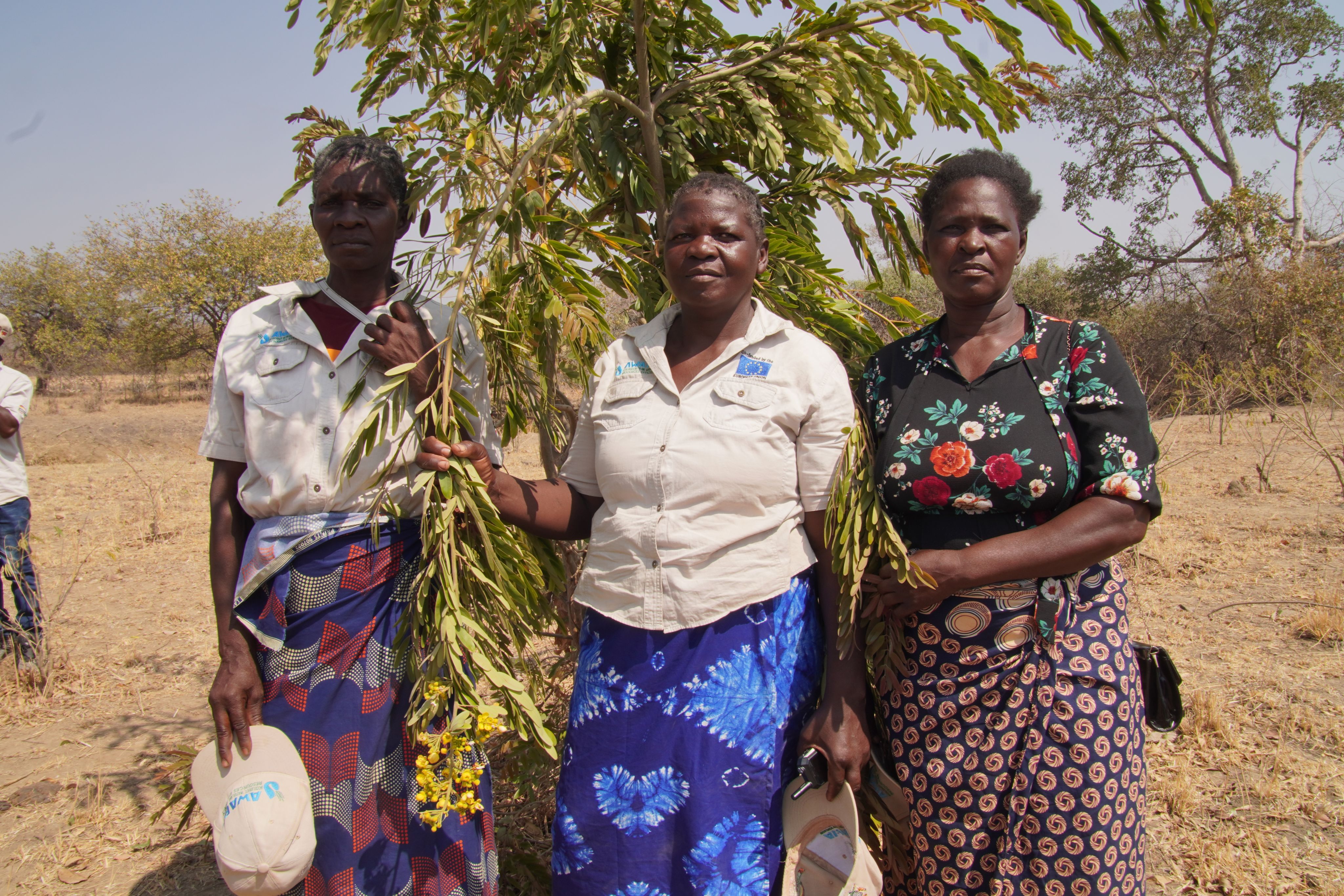
Mutema Bweengwa
Likolo Namushi, the supervisor of the Water Users Association (WUA) and Community Protection Measures (CPM) in the Mutema Bweengwa area, hopes that the community’s measures will improve water availability in areas that are most often affected by soil and gully erosion.
“We have dug these trenches to help the community have access to water by recharging [this] natural resource,” Namushi said.
The community in Mutema Bweengwa has also built weir dams that help to address gully erosion in degraded areas by trapping debris, pebbles, and sand.
“We have created a women’s group that works hand in hand with the men during the weir dam construction process. Women, for example, were planting and watering grass and trees around the gully areas to minimize erosion and support the weir dams [that were] built,” said Foster Ng’andu, leader of the women’s group. This vegetation helps prevent sediment from being carried downhill. The dam’s design slows water movement, which means more water is available for community activities, such as gardening.
Namushi explains: “We also have a challenge of land degradation due to gully erosion that often happens in Bweengwa; therefore, we have mobilized ourselves to build weir dams across the gullies to regulate water flow during the rainy season and ultimately allow the gully to get buried naturally.”
A gully formed by erosion.
A gully formed by erosion.
Cattle grazing in the drought-affected Mutama Bweengwa catchment area.
Cattle grazing in the drought-affected Mutama Bweengwa catchment area.
The Magoye river passage drying up has prompted the community's efforts to address the loss of water by restoring the recharge zone using nature-based solutions.
The Magoye river passage drying up has prompted the community's efforts to address the loss of water by restoring the recharge zone using nature-based solutions.
Participants in a Namibia-Zambia 1:1 bilateral peer learning workshop on the transition from planning to implementation in the NAP process visit Mutema Bweenga.
Participants in a Namibia-Zambia 1:1 bilateral peer learning workshop on the transition from planning to implementation in the NAP process visit Mutema Bweenga.
Magoye
The situation is similar in the Magoye catchment area, where the community is attempting to restore the source of the Magoye River, which is drying up. The headwaters of the Magoye River are found in Magoye village. These headwaters had degraded to the point that the flow of the Magoye River was critically undermined. The members of Magoye’s WUA and CPM have intensified their efforts to dig trenches to recharge the source of the Magoye headwater ecosystems while maintaining downstream water quality and quantity.
Precious Mweemba, a member of the Magoye catchment area’s WUA, explains: “As you can see, most parts of Magoye’s vegetation have dried up, with no grazing land for livestock; however, this location where we are has some significant greenery because of the trenches we have dug. Even with the little rainfall we received during the last rainy season, the trenches were able to trap surface and underground water, which is recharging the area.”
Magoye’s forest restoration project was a multifaceted initiative that combined efforts to replant native species with sustainable water management to promote resilient ecosystems. The community took bold steps to revitalize the area, halting harmful practices like tree cutting and charcoal production and replanting native species to restore the forest. To bolster water security, strategically placed trenches were dug to enhance the site’s water holding capacity and recharge the water table, replicating the successful approach implemented at the Mutema Bweengwa site. By integrating reforestation with water harvesting techniques, this community-driven project effectively promoted biodiversity conservation, reduced soil erosion, and ensured long-term ecosystem resilience, safeguarding the area’s natural resources for future generations.
Magoye has also enacted bylaws to protect the source of the Magoye River headwaters. However, enforcing these bylaws remains a challenge.
Robert Mweemba Handyabantu, Headman of Magoye, who is also a CPM supervisor, says, “The villagers find [the headwater recharge area] attractive to build their houses on due to the vegetation which is here. They are seeing it as a solution to their livestock grazing needs. We, as members of the WUA, have asked the leadership to intervene and sensitize the community on the need to restore the Magoye River system, a river which, when restored, will benefit all.”
These challenges underscored the need for effective community engagement, education, and alternative livelihood strategies to support the long-term success of the adaptation efforts.
Zambia's National Adaptation Plan
Vision: A comprehensive approach to addressing climate adaptation, strengthening systems for integrating adaptation into planning and budget processes
Key observed and anticipated impacts of climate change: Droughts, floods, heat waves, storms, seasonal shifts, and changes in precipitation patterns
Priority Sectors for Adaptation: Agriculture (crop, livestock, and fisheries), forestry, water, transport, tourism, infrastructure, mining, wildlife, and health
Year of NAP document submission to United Nations Framework Convention on Climate Change: 2023
Time horizon for NAP implementation: 2023–2030
Estimated total cost of implementing the NAP (USD): 34.7 billion
Zambia's NAP was developed with funding from the Green Climate Fund with the Global Water Partnership as delivery partner. Read Zambia's NAP here.
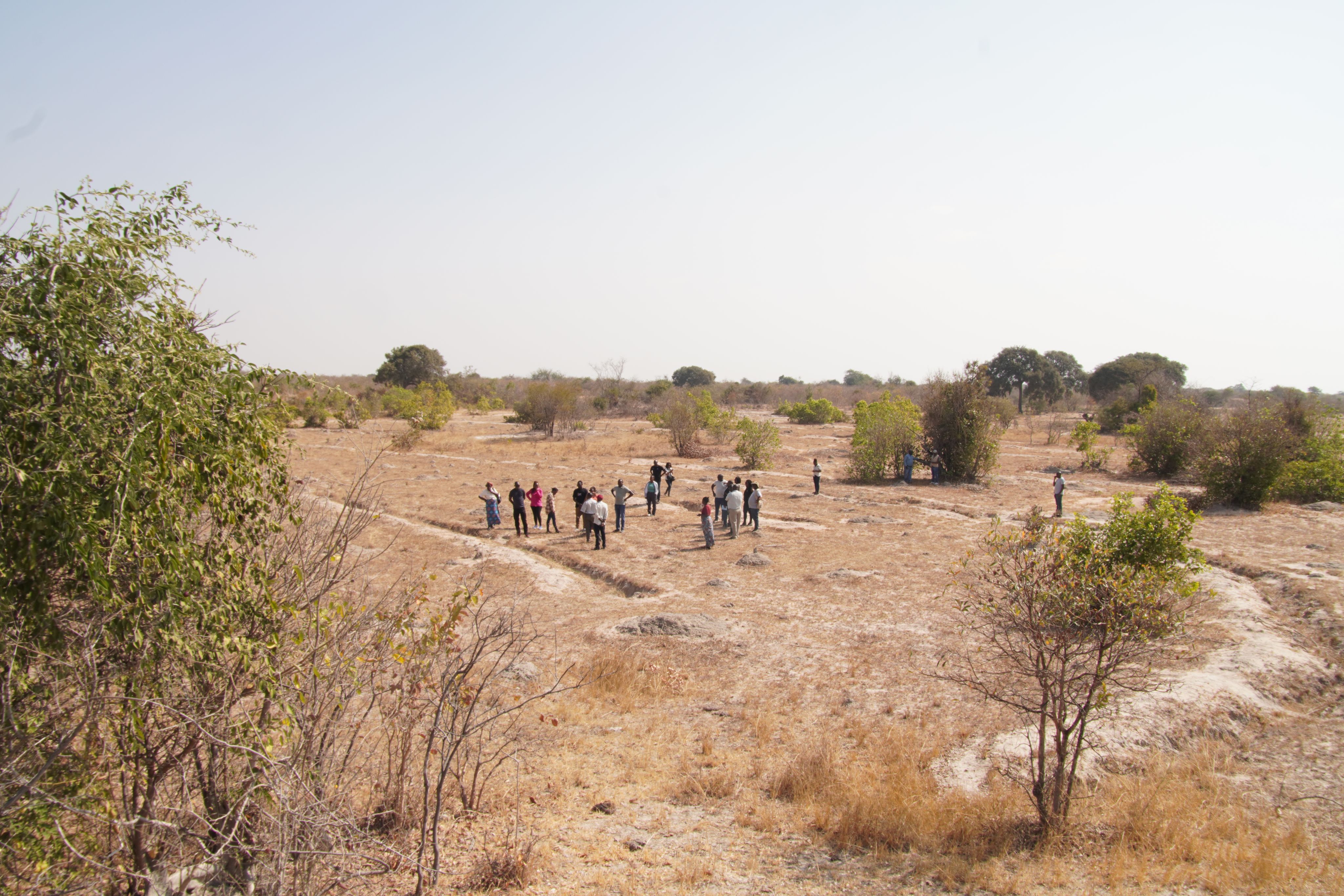
Scaling Up National Priorities for Adaptation through the NAP Process
Zambia’s NAP prioritizes addressing climate-related risks, such as drought, through ecosystem-based adaptation and NbS, including river ecosystem rehabilitation. These approaches are being implemented nationwide, with notable efforts focused on restoring the Nsongwe River in the Kavango-Zambezi Landscape protected area. By integrating ecosystem-based adaptation into the NAP process, Zambia aims to enhance resilience and reduce vulnerability to climate change impacts.
Critically, the NAP process empowers actors across the country to contribute to decision-making on climate change response strategies, fostering a collaborative and inclusive approach to addressing this pressing global challenge. Through this comprehensive framework, and as exemplified in Magoye and Mutema Bweengwa, Zambia is proactively addressing climate change, promoting sustainable development, and safeguarding its natural resources for future generations.
Participants in a Namibia-Zambia 1:1 bilateral peer learning workshop on the transition from planning to implementation in the NAP process.
Participants in a Namibia-Zambia 1:1 bilateral peer learning workshop on the transition from planning to implementation in the NAP process.
“To ensure effective NAP implementation, collaboration, and experience sharing and continuous monitoring, evaluation, and learning will be critical going forward,” says Kasanda Bunda, Zambia’s Ministry of Green Economy and Environment.
Through engaging local communities and leveraging ecosystem services, Magoye and Mutema Bweengwa provide a model for climate resilience that can be built upon through the NAP process.
Credits
Written by Mary Kasoka Mwiikisa and Kabwe Mubanga
Photos: Mary Kasoka Mwiikisa
Special thanks to: Likolo Namushi, Kasanda Bunda, Elitelio Choobwe, Agness Nzala, Precious Mweemba, Biliat Mweemba, Headman Robert Mweemba Handyabantu, Angelina Haamalambo, Betsn Nambwalu, Foster Ng'andu, Winfridah Muntanga, Joseph Mbinji (Global Water Partnership), Nancy Mando, Christian Ledwell
Read more on adaptation planning in Zambia
© October 2024, International Institute for Sustainable Development
Published by the International Institute for Sustainable Development.
This publication is licensed under a Creative Commons Attribution-NonCommercial-ShareAlike 4.0 International License.

